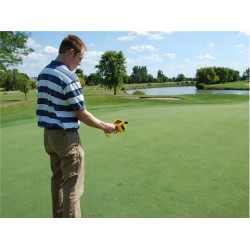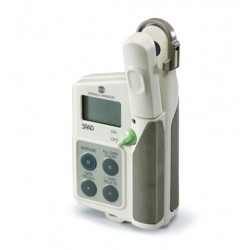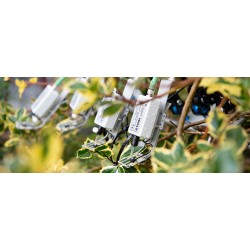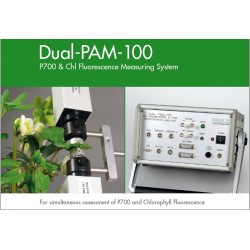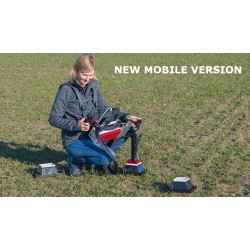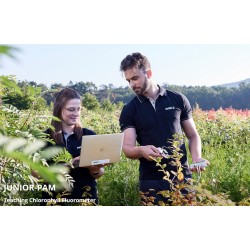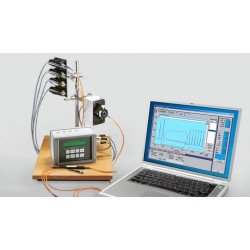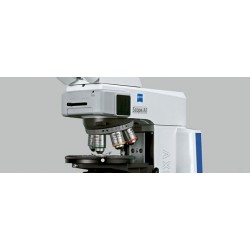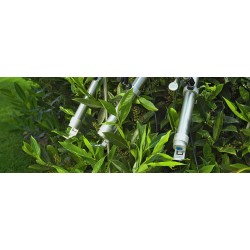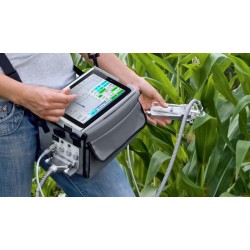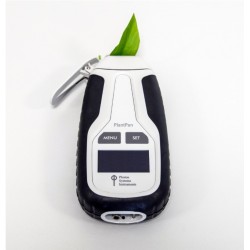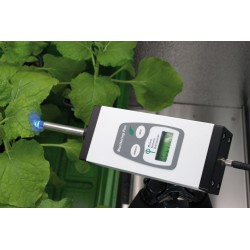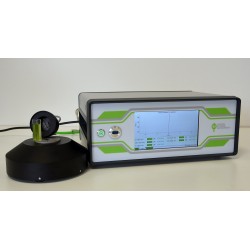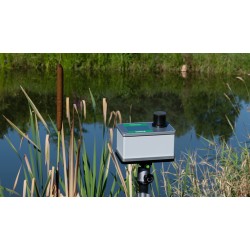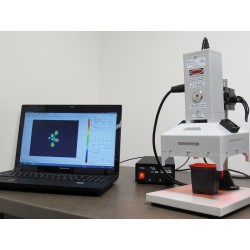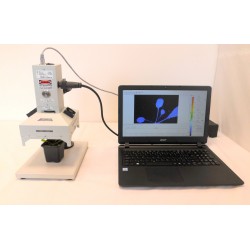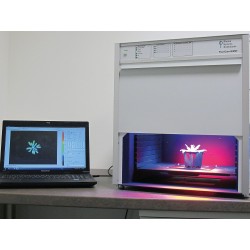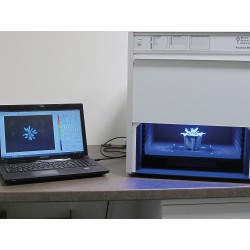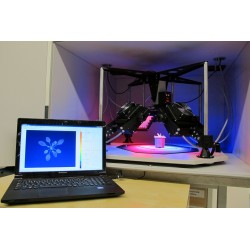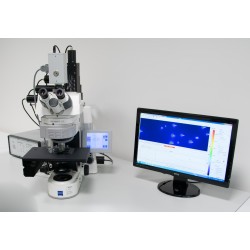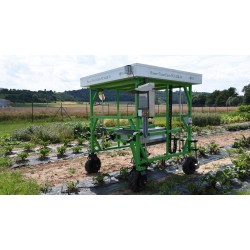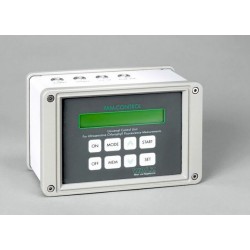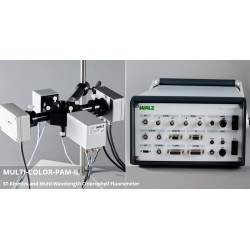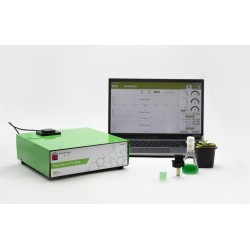No products
Prices are tax excluded
Product successfully added to your shopping cart
There are 0 items in your cart. There is 1 item in your cart.
Walz LSA-2050 Leaf-State-Analyzer
LSA-2050
New
Outstanding Properties:
◆ Measures protection against the particularly harmful UV-B radiation
◆ Probes screening at four wavebands: UV-B, UV-A, blue, and green
◆ Provides the stress factors chlorophyll content and photosystem II damage
- Consulta este producto
- Remove this product from my favorite's list.
- Add this product to my list of favorites.
| The Sensor measures: | Chlorophyll |
► The LEAF-STATE-ANALYZER LSA-2050 is a handheld device for non-invasive leaf analysis.
► The device analyses three areas that are related to the state of health of the plant:
1 - the extent of protection from ultraviolet and strong visible radiation
2 - the chlorophyll concentration
3 - the maximum photochemical quantum yield of photosystem II, FV/FM.
► In summary, the LEAF-STATE-ANALYZER LSA-2050 provides a picture of stress effects and a plant's ability to cope with stress.
The LEAF-STATE-ANALYZER LSA-2050 measures radiation screening by the efficiency of fluorescence excitation. It uses four different excitation wavebands that can be assigned to four pigment groups: UV-B and UV-A to hydroxycinnamic acids and flavonoids, respectively [1], blue to carotenoids [2], and green to anthocyanins [3].
Absorbance values indicating relative flavonoid and anthocyanin concentration are provided.
Chlorophyll concentration is measured by the Cerovic method [4]. The method excels by high response even at high chlorophyll concentrations. Photosystem II is analyzed by the well-proven PAM fluorescence/saturation pulse method [5]. With each measurement, GPS data, leaf orientation, and the direction of sun radiation are logged.
[1] Bilger W, Veit M, Schreiber L, Schreiber U (1997) Measurement of leaf epidermal transmission of UV radiation by chlorophyll fluorescence. Physiol Plant 101: 754–763
[2] Nichelmann L, Schulze M, Herppich WB, Bilger W (2016) A simple indicator for non-destructive estimation of the violaxanthin cycle pigment content in leaves. Photosynth Res 128: 183-193
[3] Cerovic ZG, Moise N, Agati G, Latouche G, Ben Ghozlen N, Meyer S (2008) New portable optical sensors for the assessment of winegrape phenolic maturity based on berry fluorescence. J Food Compos Anal 21: 650-654
[4] Cerovic ZG, Masdoumier G, Ben Ghozlen N, Latouche G (2012) A new optical leaf-clip meter for simultaneous non-destructive assessment of leaf chlorophyll and epidermal flavonoids. Physiol Plant 146: 251–260
[5] Schreiber U, Schliwa U, Bilger W (1986) Continuous recording of photochemical and non-photochemical chlorophyll fluorescence quenching with a new type of modulation fluorometer. Photosynth Res 10: 51-62
General Design:
Housing: Battery-powered handheld device consisting of a control unit and a sample clip, both made of painted polyamide 12 (PA 12). The control unit is equipped with a holder for four AAA-type batteries and a USB-C connector. Two metal flat springs press the clip jaws together. The lower clip jaw is removable.
Display: Backlit transflective B/W LCD display, 48 x 27 mm, 128 x 64 pixel
Control: Six control keys plus a separate START key to start a measurement
Data memory: Flash memory, 8 MB, providing memory for more than 30,000 data sets
Data transfer: USB-C port
Power supply: 4 AAA (Micro) rechargeable batteries (eneloop 1.2 V/2 Ah); 4 spare batteries, automatic power/off, battery charger (100 to 240 V AC, 50-60 Hz) for 4 batteries
Operating temperature: -5 to +45 °C, non-condensing
Dimensions: maximum 26.5 cm x 7.0 cm x 3.5 cm (L x W x H)
Weight: 240 g (without batteries)
Measuring Modules
Viewing area: Disk with 10 mm diameter
Upper clip jaw: Five LEDs are circularly arranged around a PIN photodiode, which is shielded from LED emission by a long-pass filter. A quartz glass disk closes the LED/photodiode compartment. Measuring light consists of 10 µs pulses given at 15 Hz except for FM determinations (100 Hz). Typical maximum emission wavelength, full width at half maximum (FWHM), and integrated intensity at 15 Hz are: UV-B, 310 nm, 15 nm, 0.1 µmol m‑2 s‑1 (0.05 W m‑2). UV-A, 365 nm, 12 nm, 0.3 µmol m‑2 s‑1 (0.1 W m‑2). Blue, 450 nm, 14 nm, 0.1 µmol m‑2 s‑1. Green, 530 nm, 27 nm, 0.1 µmol m‑2 s‑1. Red, 630 nm, 24 nm, 0.1 µmol m‑2 s‑1. The UV LEDs are only activated in the presence of a fluorescing sample
Lower clip jaw: A far red LED (peak wavelength 715 nm, FWHM 25 nm) and a near infrared LED (peak wavelength 770 nm, FWHM 30 nm) are positioned in the center of the viewing are. The LEDs are covered by a light-diffusing disk and a quartz disk
Geospatial Data: A GPS receiver, plus accelerometer, gyro- and magneto-scope sensors add geospatial information to each measurement, including the angle at which sunlight impinges on the leaf
Battery Charger
Design: Four position intelligent charger for AA or AAA Nickel Metal Hydride (NiMH) or Nickel Cadmium (NiCd) batteries
Carrying Case LSA-2050/T
Design: Padded plastic case with handle
Dimensions: 36.0 cm x 30.5 cm x 8.0 cm (L x W x H)
Weight: 920 g
Accessory:
Darkening Bags LSA-2050/DB
General Design: Set of three small, three medium and three large light-tight bags for dark acclimation of leaves of different sizes made of aluminum foil, colored on the outside. Each bag has a 2 cm diameter central hole for non-invasive determination of chlorophyll concentration with the LSA-2050. During dark acclimation, both sides of the hole are covered by metallized PET plastic flaps. The flaps magnetically attract each other which ensures that both lie tightly on the surface of the bag. The flaps are flexibly attached to the darkening bag at one end. The other, loose end is folded slightly outwards so that the sample clip of the LSA-2050 can be guided to the hole by folding open the flaps
Dimensions: 100 mm x 70 mm, 150 mm x 100 mm, 180 mm x 120 mm (small, medium, and large size, respectively)
Weight: 3 g, 4 g, 5 g (small, medium, and large size, respectively)

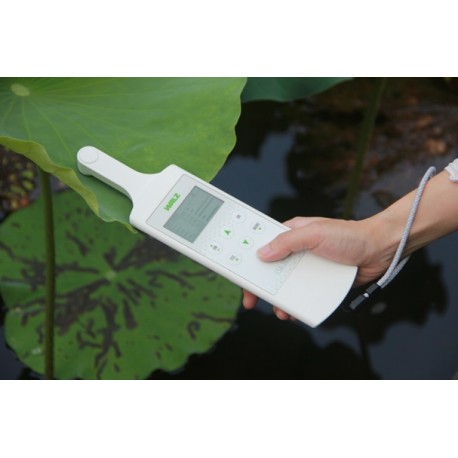















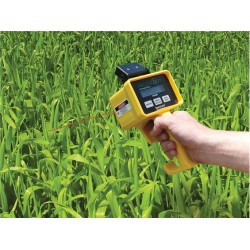
![MC-100 Chlorophyll Concentration Meter [µmol m-2] with internal GPS](https://www.alphaomega-electronics.com/18349-home_default/mc-100-chlorophyll-concentration-meter-mol-m-2-with-internal-gps.jpg)
